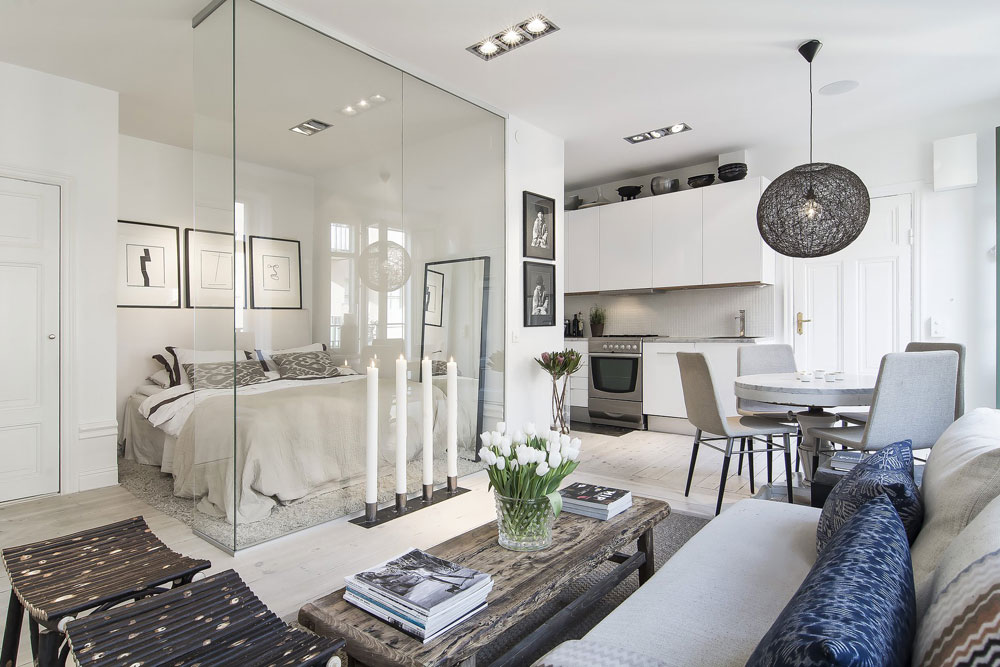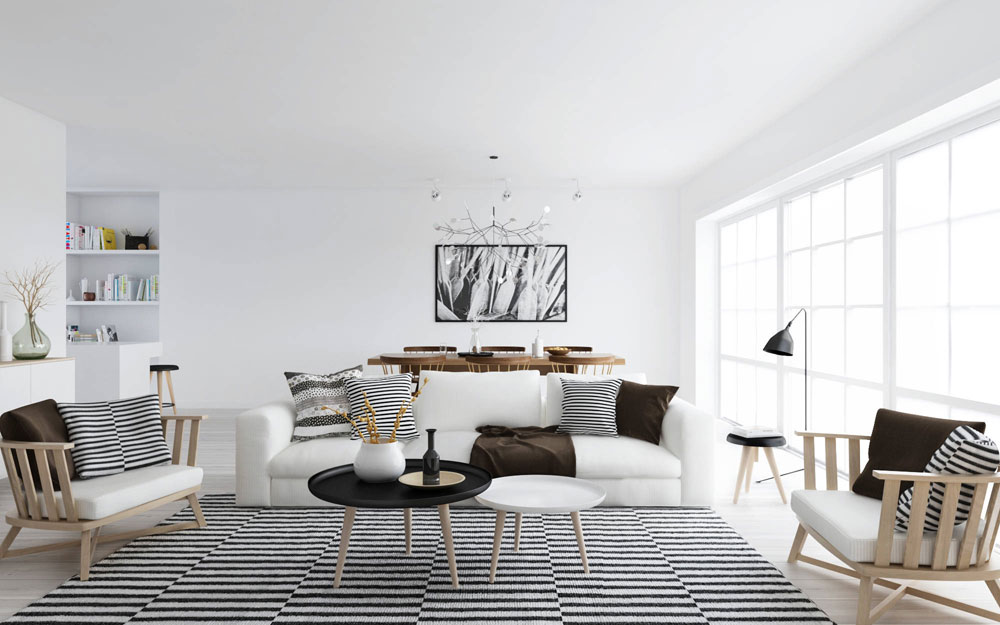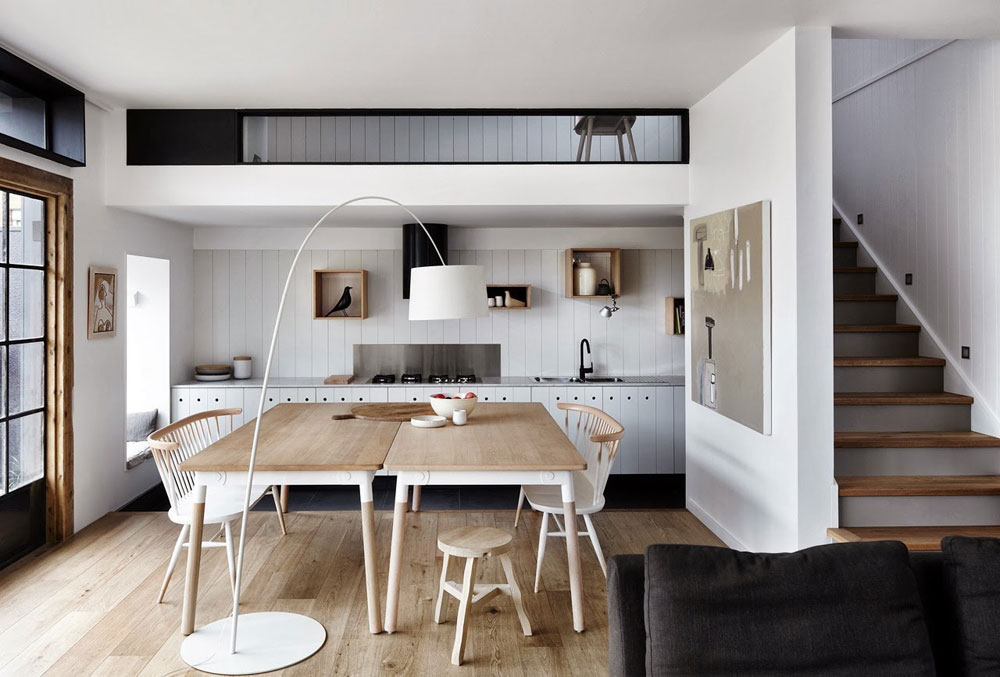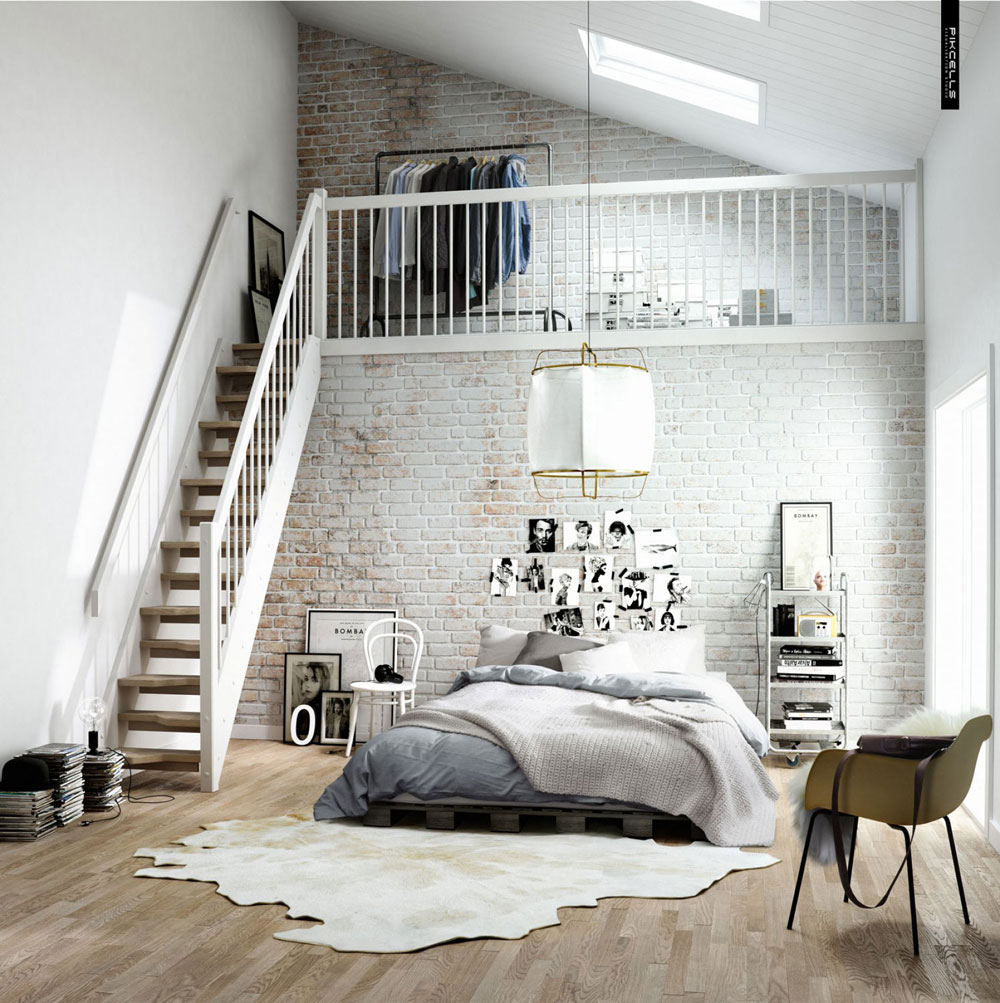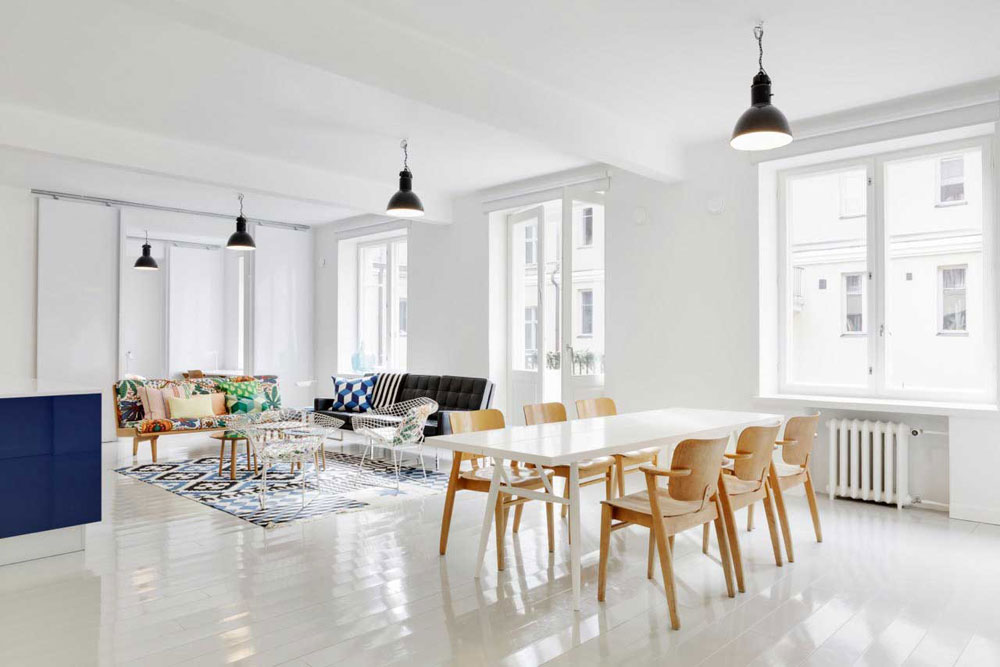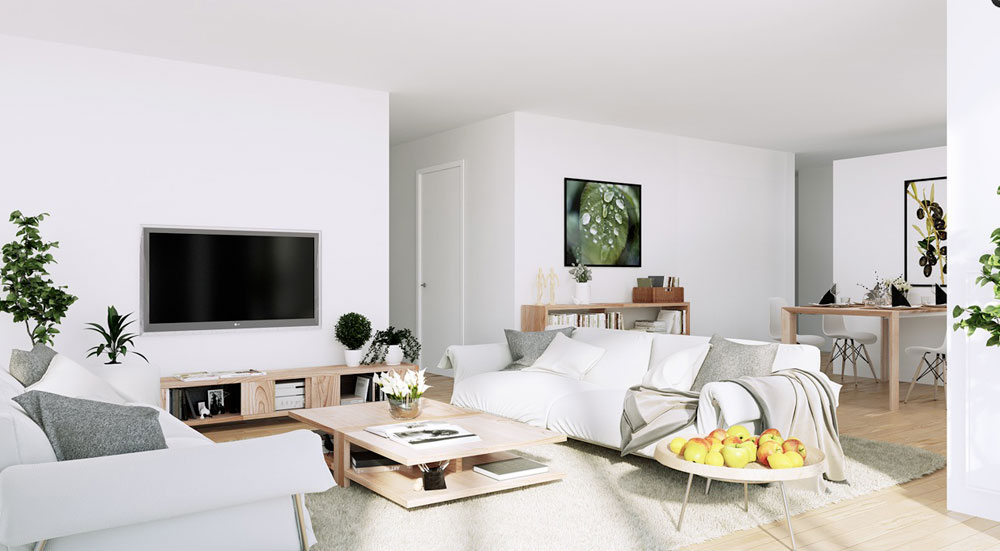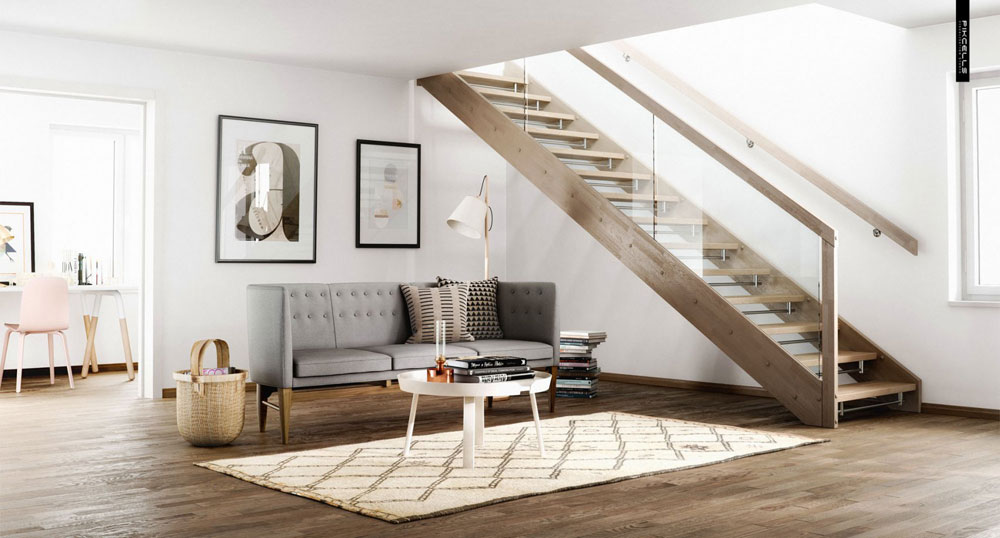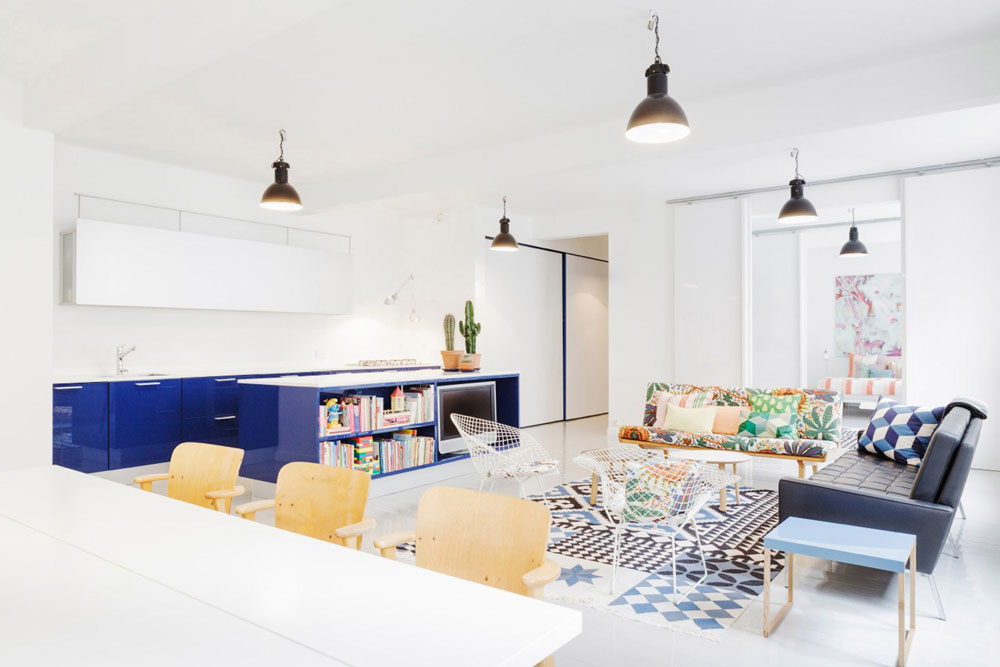Advertisement
Maximum style with minimum display, this is what Scandinavian interior design is all about.
Simplicity and function are the guiding principles that have shaped the mid-century Europe design sensibilities in this part of the continent, resulting in spaces suffused with light, airiness, serenity and a feeling of oneness with nature.
A mélange of trends from Sweden, Norway, Denmark and Finland, Scandinavian interior design principles play up natural elements, favor neutral color palettes, by keeping lines simple and squeezing optimal function out of every part of the décor.
The simple chic of this fuss-free Scandinavian designs has won followers from all over the world.
Scandinavian design history
Scandinavian home decor and the Scandinavian furniture took the world by storm after the 1947 edition of the Triennale di Milano, a popular design exhibition in the Italian city of Milan. Furniture, glassware and home accessories bearing the label of Nordic design were a sensation at the show and became a rage around the world soon after.
Capitalising on this new popularity, the Design in Scandinavia show traveled across the U.S. and Canada from 1954 through 1957 making Nordic designs known on the other side of the pond. Fascination with Scandinavian designs ideas grew even more as a result.
It’s interesting how differently Scandinavian style furniture and trends evolved from the design in the rest of Europe, which generally favored opulent and ornate décor inspired by the luxurious lifestyles of aristocracy and royalty. The home interior design ideas of the Nordic people charted a different design course, preferring the practical to the plush, picking function over frills.
The mid-century life in the region was primarily responsible for shaping Scandinavian design. Long, harsh winters with very few hours of daylight kept people indoors for many months and shaped the Nordic look. Besides, most people lived in small houses, an explanation for the Scandinavian minimalist style. Therefore, it was imperative to make homes feel cozy yet airy, with every object in it reflecting as much ambient light as possible, the main features of the modern Scandinavian style.
Quite like the people, the emerging design sensibility was egalitarian, shunning the ornate and celebrating simple elegance that seemed accessible to all, principles followed in the case of Scandinavian home design too. The result was a style that masterfully combined beauty with practicality, following the main pattern of the Scandinavian home.
Though the popularity of Scandinavian style and design waned somewhat in the 1980s, it soared again in the following decade when the style was reinterpreted. The 1990s saw designers in Scandinavian countries treating every object they fashioned for use in décor as individual units of design, creating bold and unique statement pieces. It seems like the Scandinavian home decoration is here to stay.
Guiding principles
“Less is more,” wrote the poet Robert Browning in the 19th century. He couldn’t have known then that he was unwittingly encapsulating the very essence of a design trend and house decor styles that would take shape in the Scandinavian region almost a hundred years later. A one-word definition of Scandinavian decor would be minimalism.
Here’s a breakdown of the broad guidelines of this distinctive style of the Nordic interior design:
Clean lines
Simplicity really is the mantra of modern Scandinavian design. The key principle of the Scandinavian architecture is prioritizing function without sacrificing aesthetics. Nowadays, the offer of Scandinavian furniture online includes an impressive category of models and styles, at a variety of – mostly affordable – prices.
The best example of Scandinavian minimalism is the ubiquitous Arne Jacobsen 7 chair, a typical presence in a Scandinavian store, that has made its way into millions of dining rooms, kitchens and offices around the globe. Surprisingly sturdy given its simple yet delicate lines, this chair, a staple of mid-century modern architecture, with timeless appeal takes up very little visual space and is a boon for a compact living or workspaces.
Light
Keeping the gloom of the long winter out means relying heavily on the light in Scandinavian house and décor. Natural light is amplified by any means necessary. The windows of the Scandinavian living room are generously proportioned.
Window treatments, if used at all, are kept sheer or translucent. Mirrors, an important element of the Scandinavian decor, are placed strategically to visually expand the space and reflect any available ambient light. The dominant color palette of the Scandinavian decor is generally a light-reflecting neutral.
In the conception of the Nordic style, electric fixtures are also designed with simple lines and forms, creating light without adding visual clutter. And candles are widely used, lending softness to the Scandinavian home décor with their flickering flames.
Neutral color
Serene, muted neutrals – with bright white being the star – dominate the Scandinavian design. These calm colors make rooms appear bright and spacious even on a dreary day, an important interior decorating tip for recreating the original Nordic ambiance. Timeless white walls, trim, cabinets and countertops appear to recede visually, making the rooms of Scandinavian houses feel much larger than they really are.
Preference for sober colors doesn’t, however, mean that Scandinavian design is devoid of vibrancy and vitality. Accent pieces like pottery, rugs, cushions, and art in bright hues inject spaces with life and character and define a stylish Scandinavian modern style. In fact, they stand out more dramatically in a space designed this way.
Natural elements
Ardent lovers of the outdoors, Scandinavians believe in celebrating nature even when inside their homes. That’s why natural wood is a predominant feature of Scandinavian interiors characteristics. Wood is the preferred choice not only for the Nordic furniture but also of flooring.
Pine, beech, and ash are by far the favorites of the Scandinavian architect. Stains and varnishes have generally kept the light in order to maintain a feeling of airiness. Potted plants are also commonly used in interior décor of Scandinavian decoration to mimic nature within the home.
Textiles
A space designed in the Scandinavian home design style isn’t visually weighed down by a lot of heavy fabric. Textile accessories are used sparingly in the Nordic-inspired interiors, but for maximum impact.
For instance a colorful rug defining the lounging space and a couple of cushions with prints of bold chevrons or stripes warming up a light-coloured love seat; a knitted throw on the couch; sheer drapes on the windows; and maybe some patterned placemats and napkins on the dining table. Natural fabrics like cotton, wool, and linen are preferred over synthetics and blends, important elements of the Scandinavian inspired living room.
Ending thoughts on Scandinavian design
All these principles of Nordic decor and design work together to achieve the Scandinavian ideal of “lagom”, a Swedish word meaning just the right amount – not too little, not too much. They create spaces that are simple, uncluttered and efficient, yet warm and welcoming, typical features of any Scandinavian style home.
Scandinavians like nothing better than to have family and friends over for a meal. The kitchen table, often with expansion leaves, plays an important role in the Scandinavian design furniture and becomes the heart of the home where everyone gathers. The bright, inviting homes make it easy to live the Danish dream of “hygge”, which is essentially living the good life surrounded by loved ones.
Scandinavian homes and interior design is as egalitarian as it is utilitarian. There are as many high-street boutiques and Scandinavian designs outlets selling Scandinavian décor essentials as there are affordable Scandinavian furniture stores, bringing it within everyone’s reach.
And because Scandinavian furniture and interiors, in general, are minimalist, most can adopt them without breaking the bank. Just changing a few accent pieces now and then is enough to refresh any space and have your own Scandinavian home decorating experience.
I’m sure that after you’ve read about its principles and characteristics of this mid-century modern architecture trend, you now know what is Scandinavian interior idea design and, most of all, you know how to use it as.
If you liked this article about Scandinavian design, you should check out these as well:

